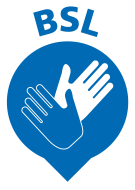Community Public Access Defibrillators (cPADS) save lives across the North East
A cPAD is a defibrillator that’s available to members of the public to use if someone has a cardiac arrest. These are available for use 24 hours a day and are often located in buildings that are permanently open, such as hotels, or in special cabinets on the outside of buildings.
A defibrillator is a piece of lifesaving equipment that can be used when a person goes into cardiac arrest. This is when their heart stops beating normally because the electrical activity in their heart has become disrupted and disorganised. A defibrillator gives a jolt of energy to the heart, which can help restore the heart’s rhythm and get it beating normally again.
Defibrillators can save lives. When someone’s heart stops beating, oxygen is no longer being transported to their brain and other vital organs. Without any intervention, brain damage will start to occur within four to five minutes.
A patient’s chance of survival falls by between 7 and 10 per cent with every minute that defibrillation is delayed.
However, studies have shown that a shock given within three to five minutes can produce survival rates of between 50 and 70 per cent.
If you see someone unconscious and not breathing, first call 999 and the operator will tell you if there is a defibrillator nearby. If there is, you’ll be asked to stay with the patient and carry out CPR while someone near you locates the defibrillator and brings it to you.
The 999 operator will give you the code to unlock it.
Defibrillators give the person using them clear audio instructions. And don’t worry, you can’t hurt someone with a defibrillator because it won’t work unless a person is in cardiac arrest.
Being familiar with the four steps of the Chain of Survival could help you to save a life in an emergency:
- Early recognition - recognise a cardiac arrest and call 999.
- Early CPR – keep the brain and other vital organs supplied with blood and oxygen.
- Early defibrillation – using a defibrillator as soon as you can increase someone’s chance of survival.
- Early advanced care by paramedics and post-resuscitation care in the hospital.
If you start CPR within two minutes, use a defibrillator within four minutes, and a paramedic arrives within eight minutes, patients will have a 40% chance of survival.
You can use defibfinder to find the 10 defibrillators nearest to you. These are defibrillators registered on The Circuit and have given permission for their information to be shared.
Learn CPR with CPR man
Using a defibrillator

